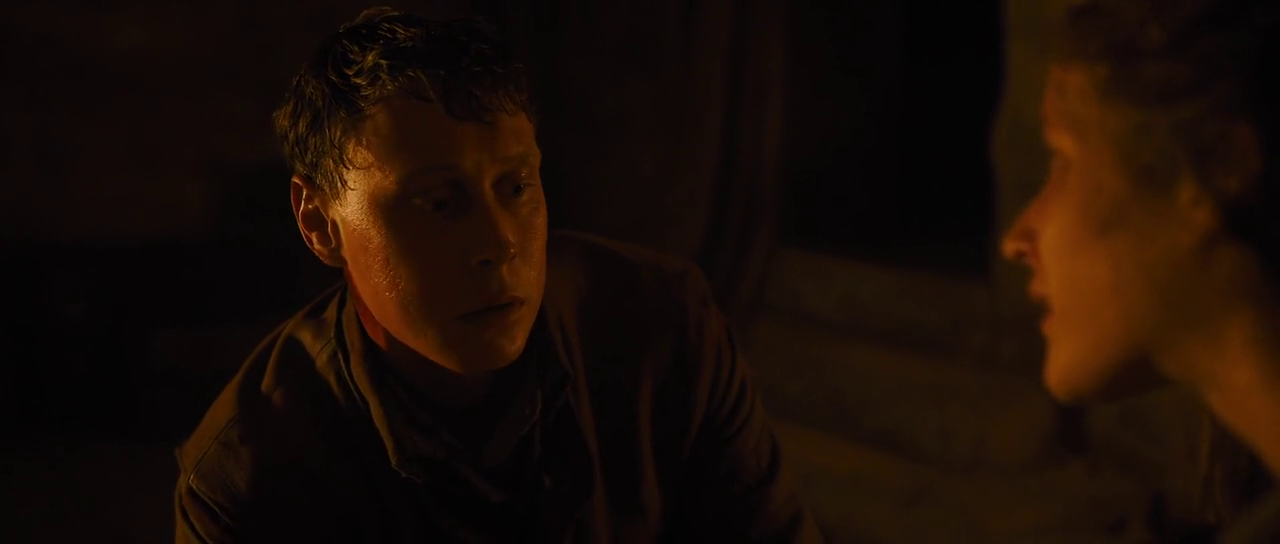Why 1917 is so Amazing
First you should know that 1917 is
the most anxiety-producing film I’ve seen in a few years. At least twice, I gasped out loud. The tension was so thick
that for the first hour, my hand was literally on my heart. In some scenes, I
shut my eyes in anticipation of the horror that would inevitably unfold. In
short, I was a mess. But being a mess because a film is so devastating and
powerful is the best sort of mess there is.
In 1917, director and
co-writer Sam Mendes, co-writer Krysty Wilson-Cairns and DOP Roger Deakins
deliver a film that combines high impact with high artistry. The film has been
designed as a single continuous shot. There are hidden cuts of course but like
Alfred Hitchcock’s Rope or Alejandro Iñárritu’s more recent Birdman, 1917 aims
to deliver the experience of an uninterrupted take. The set-up is simple – on
April 6, 1917, two young British soldiers must cross enemy lines to deliver a
critical message to British troops who are on the other side.
They are given their
mission in the first few minutes of the film. We then take the journey with
them.
The single shot format
puts us into their shoes – we have no idea what’s coming next and we are
discovering the terrain as they are. We don’t get the respite of a cut. I will
admit that mid-way, my nerves were so frayed that I was grateful for the
interval that theaters insist on.
It allowed me to reclaim
my emotions a little. Lance Corporal Blake, played by Dean-Charles Chapman and
Lance Corporal Schofield, played by George MacKay have a youthful bravery that
is heart-breaking. They are basically children playing with death. Bodies loom
large in this film – men, rats, dogs, cows. In one scene, Schofield plunges his
hand into the open stomach of a corpse.
And yet, despite the
omnipresent death and destruction, 1917 feels throbbing and thrillingly alive. The
fluid cinematography, which moves from ground level to a bird’s eye view, hurls
us into the center of the action. The camera glides around the men and
sometimes pivots to catch faraway action. And we are right there with them,
almost like another character. The production design by Dennis Gassner is also
meticulously detailed. Mendes immerses us into the hell of war.
There is no escape from
the misery and the mud, the cold and the chaos. But the realistic textures are
offset by surreal touches. The No Man’s Land that these men cross seems like a
vast wasteland. In one sequence, the terrain is lit by yellow phosphorescent
haze, like a nether world. It’s grand and tragically beautiful. Thomas Newman’s
sparingly used music heightens the piercing sense of unfathomable loss.
The babyish, unlined
faces of Chapman and MacKay underline the absurdity of this particular war and those yet to come. These
boys are unstintingly brave but their courage seems futile. They are heroic but
in this brutal and unforgiving battle, there are no heroes. At its heart, 1917
is a portrait of the pointlessness of war and therefore a plea for peace. There
will be times in the film when the craft might distract you. I found myself
trying to catch the hidden cuts – in a sequence in which Schofield falls into a
river, I was wondering how the cameras were rigged.
But mostly 1917 is
electrifying but also quietly emotional. If you’re watching just one film this
week, make it this one.








No comments:
Post a Comment